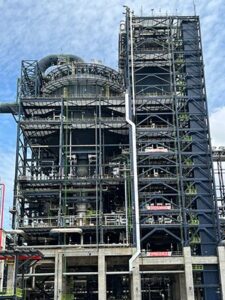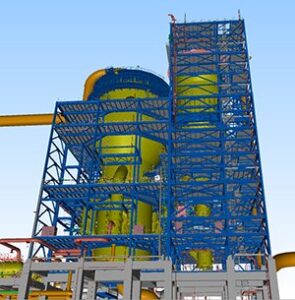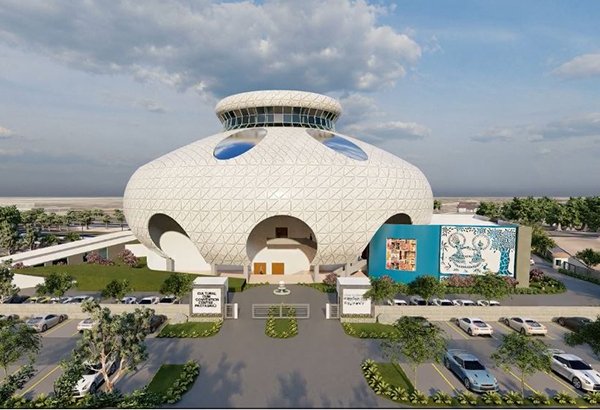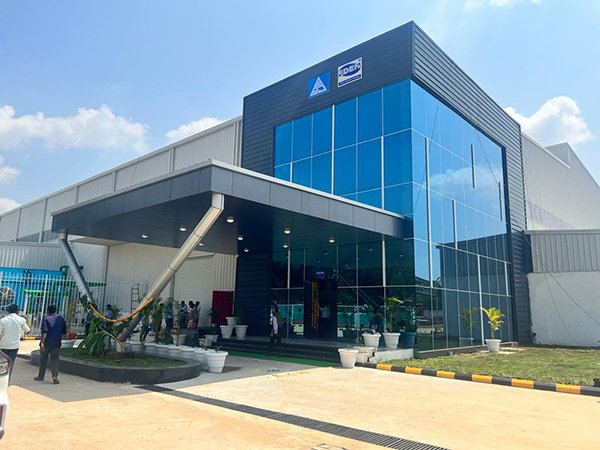Your College Name & Place: Jadavpur University, Kolkata & IIT Delhi
Total Years of Experience: 24+ years
Your Idol / Mentor: My Guru and guide, a visionary himself, who has instilled in me the desire to find myself and my latent potential.
Your mantra for success: Focus, dedication, devotion and sustained hard work for Horizontal growth.
You want to be remembered as :A good human being and as a profound professional.
Steel Projects that you are Currently Working on: Refinery Expansion Project, North India
“Talking About Life’s Engineering Saga. ‘TALES’ is a segment that exclusively focuses on the top Project/Structural Consultants across the globe sharing their engineering journey in their own words.
She is a force to reckon with… a scholar & an impeccable leader, she knows her mind & never stops learning even when at the top…”
Here’s Papia Mandal
General Manager, Engineers India Limited sharing her inspiring journey with us…”
What inspired you to take up engineering as a profession?
Engineering was my inspiration since the time I was in my senior year of school. Engineering, especially civil engineering, was my choice because I could visualize structures and feel the loads and their corresponding behavior. To say the least, for me, it was an exciting prospect of satiating my curiosity!
How was your learning curve from a student to a pro today?
As an engineering student I was not only enthusiastic to get deeper into the design of the structures but gradually as I delved into detail, I became very passionate about learning about design. Gradually, this got inculcated in my professional personae. It may sound odd and surprising but I recall distinctly that, whenever I used to fill out any form regarding various subject choices, I used to invariably fill in “structure” as my 1st preference and leave other preferences blank. During my final year, I scored 99.17 percentile in the GATE exam with an all-India rank of 40 and got direct admission to IISC Bangalore.
At times, the tradeoff between some choices becomes really difficult. The same happened to me when in my final year of engineering, I was selected through a campus interview by one of the premium organizations, Engineers India Limited. I chose EIL over IISC Bangalore but after joining the organization, very soon I realized that, more than being a renowned organization, it was a temple of knowledge. A few years down the line, I fulfilled my wish of pursuing an MTech in structural engineering from IIT Delhi. The streak of that learning journey is still continuing!
What various challenges do you face as a structural consultant?
We, in EIL work for niche industries that are highly technologically driven and complex in orientation. Eventually, the structures we design are subjected to special types of loading along with heavy gravity loads. These structures require heavier sections, at times which becomes an inevitable necessity. Fortunately, the steel industry is also maturing and since a wide variety of wide flange beam structures are available, we have gradually replaced the built-up sections, box sections and star columns. We restrict ourselves predominantly to the wide flange sections available or the built-up sections made out of plates when the structural challenges posed by the loads warrant so. The process of arriving at optimal and construction-friendly designs for fast-track implementation has been the key. To state the least the process of establishing this optimality is not only a challenging and exciting exercise, but an intriguing one too.
How do you see the adoption of rolled sections in the Indian construction community?
We, in our company, design all our structures using only rolled sections. In most of our refinery or petrochemical projects structural steel consumption is to the tune of more than lakh tons and almost 80 percent of total steel consumption is only rolled steel.
Rolled sections are not only being adopted by the industry on a huge scale but also due to technical acceptability and backed up by BIS stipulations, rolled sections will surely be the future of the industry.
If you can change one thing in our construction practices in India, what would that change be?
Engineers like us design structures with a lot of passion and with utmost caution. Sometimes, due to a lack of skilled labor at the site, the quality of structural fabrication gets compromised. In view of the same, I would strongly recommend manufacturing all structures at high-quality shops with skilled technicians and installing them like equipment/machines. Yes, I am talking about 100 percent modularization. Incidentally, in several projects where the scales were significant, we have already adopted the concept of pre-fabricated bolted structures for fast tracking our implementation of projects. It is, therefore, not surprising that the early days’ project schedules of 50-60 months have been successfully executed within 36-42 months utilizing the ability to design and prefabricated structures and when logistics permitted even as modules.
How has your relationship with steel been?
Steel design was my first choice as a subject during engineering and as a consultant, it is still my first choice as a construction material for our industry. In most of the Hydrocarbon Industry, we invariably prefer composite designs and typically, up to 7.5-9 m utilize RCC superstructures beyond which it is only steel. This offers us an opportunity of rationalizing the steel required and ensuring continuity of construction as by the time the RCC superstructure is completed the pre-fabricated steel is available for erection.
Which is your best work in steel so far? What is so special about it?
I was fortunate enough to remain engaged as a structural group lead for some of the world’s largest units of international refinery projects. The reactor-regenerator structure of FCC unit of the above-mentioned project was a pleasure to be associated with. It gave me a chance to design the tallest and the heaviest of structures used ever in the Hydrocarbon Industry hitherto. The structure supports about 8000 tons of equipment, with lots of heavy and critical piping and valves. I consider this a privilege and pride to be associated with such a fantastic design challenge.
Which international steel-specific project inspires you the most for its structural elegance? Why?
As mentioned above, in this international refinery project, I was involved in, with more than 70,000 MT of structural steel. Units being enormous in size, structures being complex in nature and overall, this being a landmark project for the Global Hydrocarbon Industry remains special and a great inspiration for me. It was like a dream come true. Like Scaling Everest and viewing the creation which is a near wonder, on sheer strength of its size and Mammoth grandeur.
How do you update and upgrade with the changing times?
I am a firm believer in the saying, “A Day when you don’t learn something new is a day wasted”. Updating, upgrading and especially growing horizontally is the secret for each and every engineer and especially while one is making inroads from middle to top management. In this era, the world is changing at a tectonic pace in huge dimensions; every field of either technology or management is revealing a new dimension as we intrude into the paradigms of complexity. Moreover, I feel most of Engineering, Management, IT and even Artificial Intelligence are interrelated and require a holistic view as a professional.
In recent years, developing management skills with a strategic and foresight-oriented overview was felt necessary to enhance my technical repertoire of attributes and strengths. Attributes like, organizational perspectives, financial accounting, data analytics, technology and digital interface to fast-tracking designs, strategic outlook to leadership and human resource management were felt as a prerequisite for enhancing my overall persona and potential to serve at a corporate level. I try to unleash my own vision of marriage between technical prowess and managerial requirements to further substantiate my creativity and professional growth. To add some of these attributes immediately to my portfolio, I have and am pursuing various higher studies.











